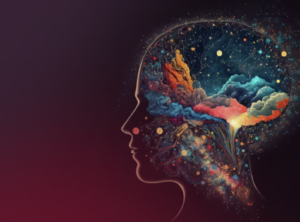
Holistic Therapy Treatments That Work for Chronic Pain Sufferers
Table of Contents
Introduction
Chronic pain can make daily life difficult. Simple tasks like walking, sitting, or even sleeping become hard. Many people try medicines, but they do not always work. That is why some people look for other options.
Holistic therapy treatments can help reduce pain in a natural way. These methods focus on the whole body, not just one area. They can also improve mental health. In this blog, we will explore different holistic therapy treatments and how they help with chronic pain.
Understanding Chronic Pain
Chronic pain lasts for months or even years. It can happen due to health problems like arthritis, back pain, or migraines. Unlike short-term pain, chronic pain does not go away easily. It can affect mood, sleep, and energy levels.
Traditional treatments like painkillers and surgery help some people. However, they do not always provide long-term relief. That is why many turn to holistic therapy treatments. These natural methods focus on the body and mind together.
The Mind-Body Connection in Pain Management
Pain is not just physical; it is also mental. Stress and negative thoughts can make pain worse. Likewise, relaxing the mind can help reduce pain. That is why mind-body therapies are important in holistic therapy treatments.
Some effective mind-body techniques include:
- Meditation – Helps calm the mind and lower stress.
- Breathwork – Improves oxygen flow and relaxes muscles.
- Mindfulness – Teaches how to focus on the present moment instead of on pain.
These methods can help people feel better and more in control of their pain.
Holistic Therapies That Offer Relief
Many holistic therapy treatments help with chronic pain. Some of the most effective ones include:
Acupuncture and Traditional Chinese Medicine
Acupuncture is an ancient practice that uses thin needles on the skin. It helps balance energy in the body and can reduce pain. Many people find relief from back pain, arthritis, and migraines through acupuncture. Likewise, Chinese herbal medicine can also support pain management.
Chiropractic Care and Osteopathy
A chiropractor adjusts the spine to improve body alignment. Poor posture or spine issues can cause pain. Chiropractic care can help with back pain, headaches, and joint pain. Similarly, osteopathy focuses on body movement and can improve overall health.
Massage Therapy and Myofascial Release
Massage therapy helps relax muscles and improve blood flow. This can reduce pain and stiffness. Myofascial release is a special massage technique that focuses on deep tissue. It helps with long-term muscle pain and tension.
Herbal and Nutritional Therapy
Eating the right foods can also reduce pain. Some herbs and foods help lower inflammation in the body. For example:
- Turmeric – A natural anti-inflammatory spice.
- Ginger – Helps with muscle and joint pain.
- Omega-3 fatty acids – Found in fish and seeds, they reduce swelling.
By including these foods in their diet, people may feel less pain over time. This is one of the key benefits of holistic treatment methods.
Hypnotherapy for Pain Management
Hypnotherapy uses relaxation and guided thoughts to change how the brain feels pain. It helps people gain better control over their pain signals. Many people with chronic pain find hypnotherapy useful when combined with other treatments.
Lifestyle Changes to Support Holistic Pain Relief
Besides therapy, small changes in daily habits can also help. Some of these include:
The Role of Diet and Nutrition
What people eat affects how they feel. A diet rich in healthy foods can lower inflammation. Eating more vegetables, fruits, and lean proteins can make a difference. Likewise, drinking enough water helps the body heal better.
Exercise and Movement Therapy
Moving the body helps reduce stiffness and pain. Some gentle exercises include:
- Yoga – Helps stretch muscles and improve flexibility.
- Tai Chi – A slow exercise that improves balance and reduces pain.
- Walking – Walking keeps the joints active and reduces stiffness.
People with chronic pain should start slow and listen to their bodies.
Sleep and Pain Management
Not getting enough sleep can make the pain worse. It is important to:
- Stick to a regular sleep schedule.
- Avoid screens before bed.
- Use a comfortable mattress and pillows.
Better sleep leads to better healing. This is another one of the benefits of holistic treatment methods.
Stress Reduction Techniques
Stress makes pain feel worse. That is why it is important to manage stress. Some easy ways to do this are:
- Journaling – Writing thoughts down can help release stress.
- Art Therapy – Drawing or painting can help people relax.
- Listening to Music – Soothing music can calm the mind and body.
By reducing stress, pain levels can also go down.
When to Seek Professional Guidance
Holistic therapy treatments can help with pain, but it is always good to talk to a professional. A doctor or therapist can help find the right treatment plan. Likewise, finding a trained holistic therapist ensures safe and effective care.
People should seek professional help if:
- The pain is getting worse instead of better.
- They feel weak or dizzy.
- Pain affects daily activities too much.
A combination of medical care and holistic therapy treatments works best for many people.
Conclusion
Chronic pain is difficult, but natural treatments can help. Holistic therapy treatments focus on the whole body, not just the pain. Acupuncture, chiropractic care, massage, and herbal therapy are all useful options.
Moreover, making small lifestyle changes like eating well, exercising, and managing stress can also improve pain levels. The benefits of holistic treatment methods go beyond pain relief—they also improve overall well-being.
If you or someone you know struggles with chronic pain, exploring holistic therapy treatments may be worth it. Always speak to a professional before starting any new treatment.
Experience Deep Healing with Rima the Jungle Girl
Discover the power of holistic therapy, hypnotherapy, and microdosing to transform your mind and body. Whether you’re seeking pain relief, emotional balance, or a fresh perspective, Rima guides you toward natural healing.
Ready to begin your journey? Book a session today!
FAQs
- What are holistic therapy treatments?
Holistic therapy treatments are natural methods that focus on the whole body instead of just one part. They include acupuncture, massage, herbal medicine, meditation, and chiropractic care. These treatments help manage pain, stress, and overall health. - What are the benefits of holistic treatment methods?
The benefits of holistic treatment methods include pain relief, better sleep, reduced stress, and improved overall well-being. They also have fewer side effects compared to medicines and help the body heal naturally. - Is holistic therapy safe?
Yes, holistic therapy is generally safe when done by trained professionals. Some treatments, like acupuncture or chiropractic care, should be performed by licensed experts to avoid any risks. - Can holistic therapy replace medicine?
Holistic therapy can work alongside medicine, but it may not always replace it. Some people find enough relief with natural treatments, while others may need both medicine and holistic care for the best results. - How long does it take to see results?
Results vary depending on the person and the type of treatment. Some people feel relief after one session, while others may need weeks or months to notice a difference. Consistency is key for long-term benefits. - Which holistic therapy is best for chronic pain?
The best holistic therapy depends on the type of pain. Acupuncture, massage, chiropractic care, and herbal medicine are all effective options. It is best to try different methods and see what works best for you. - Can holistic therapy help with stress-related pain?
Yes, holistic therapy can reduce stress-related pain. Techniques like meditation, yoga, breathwork, and hypnotherapy help relax the mind and body, making pain easier to manage. - Do I need a doctor’s approval for holistic therapy?
It is not always required, but it is a good idea to talk to a doctor before starting holistic therapy. They can help choose safe treatments, especially if you have other health conditions or take medication. - Are there any side effects of holistic treatments?
Most holistic treatments have few or no side effects. However, some people may experience mild reactions like soreness after a massage or slight bruising from acupuncture. Always go to a qualified therapist to reduce any risks. - How often should I do holistic therapy for pain relief?
It depends on the type of therapy and the severity of the pain. Some treatments, like acupuncture or massage, may be needed once a week, while others, like meditation or yoga, can be done daily for the best results.








